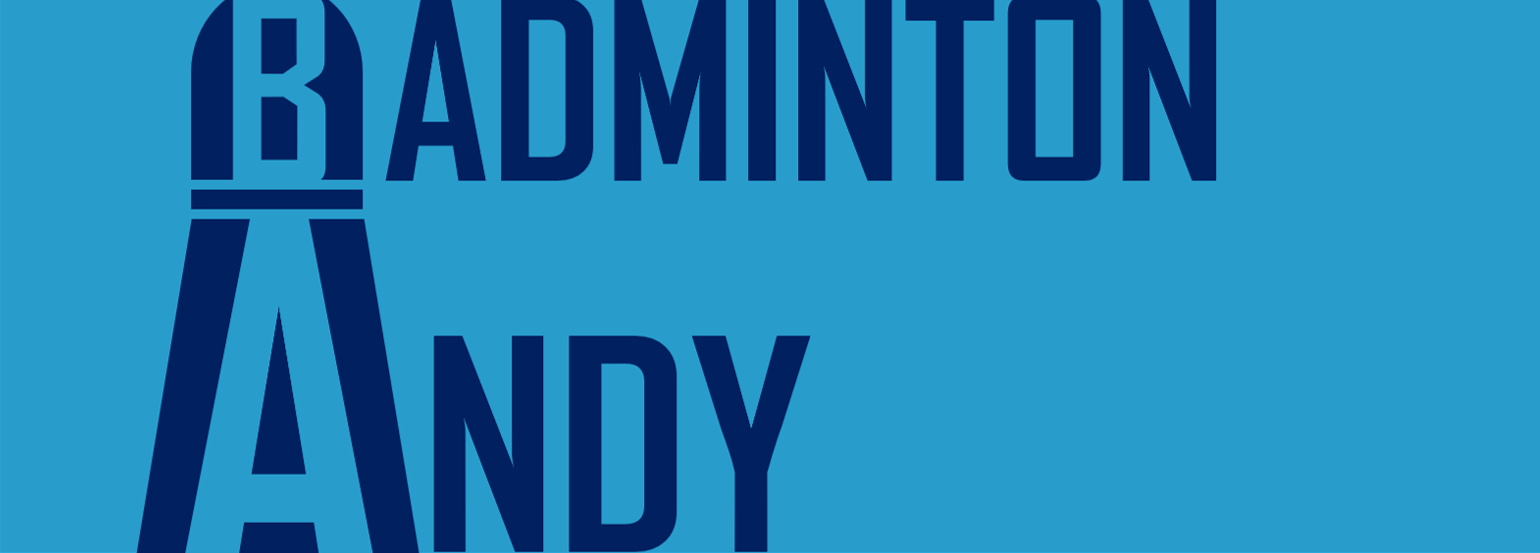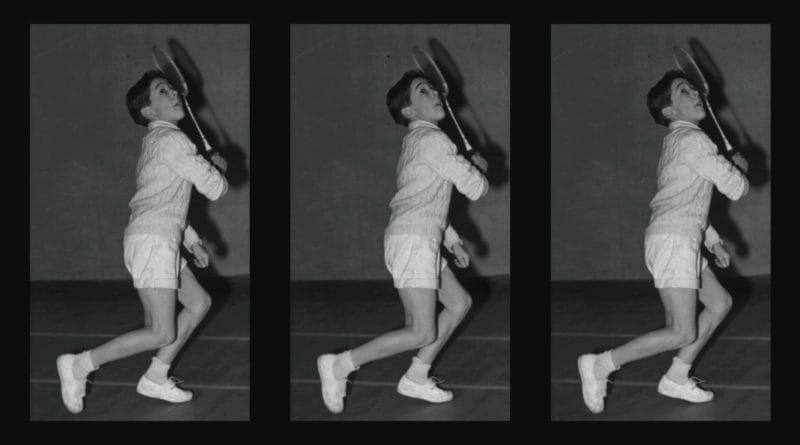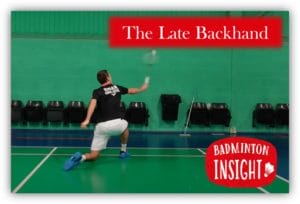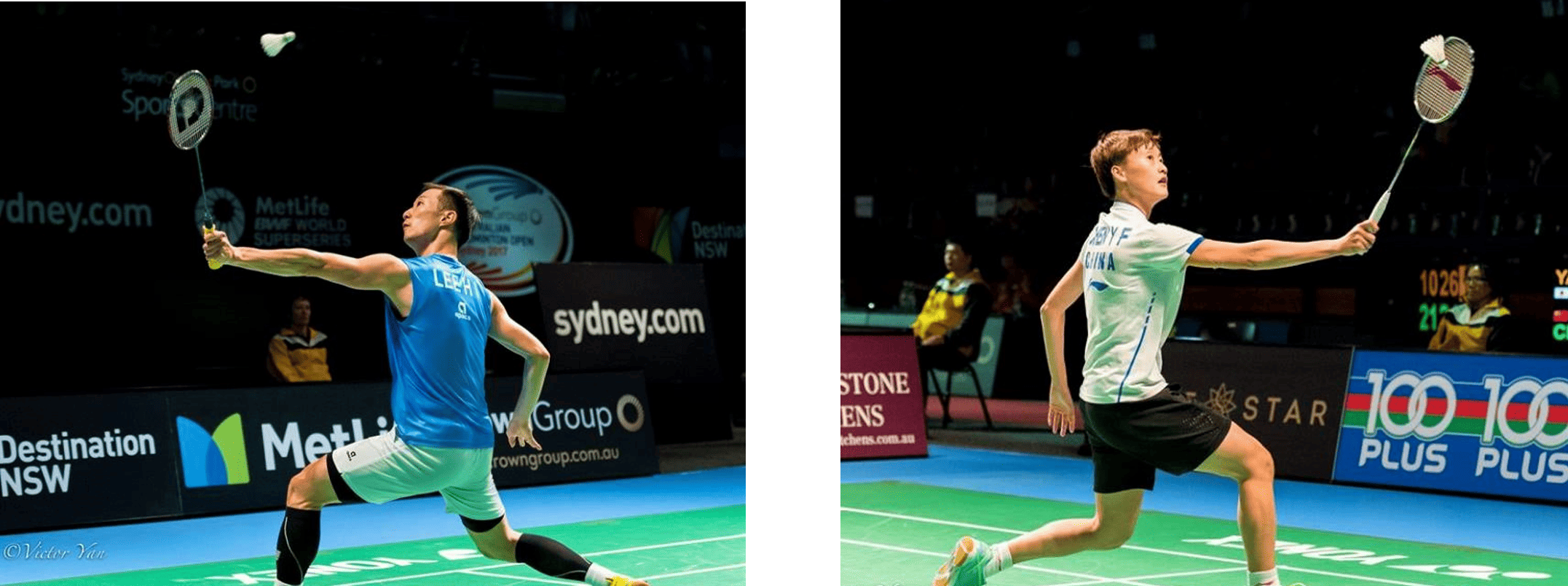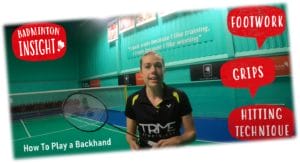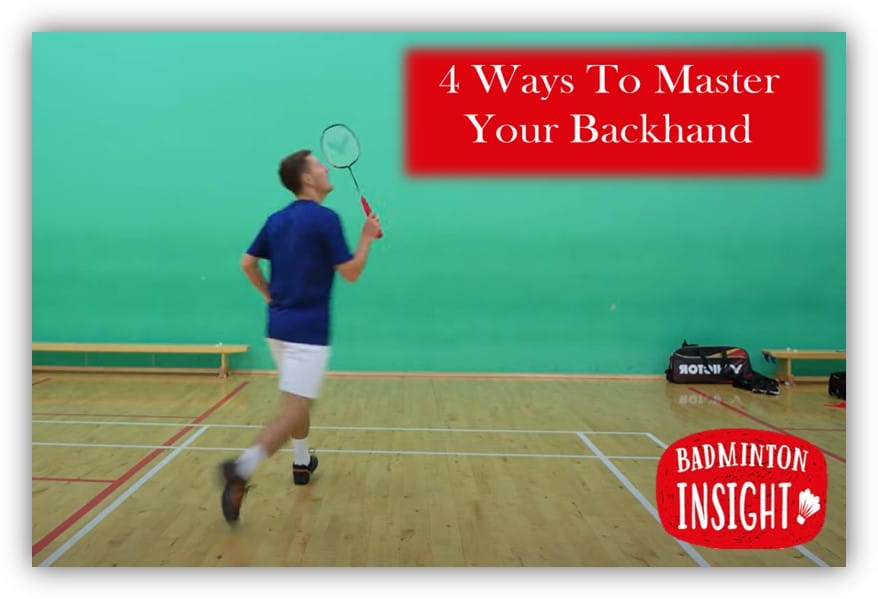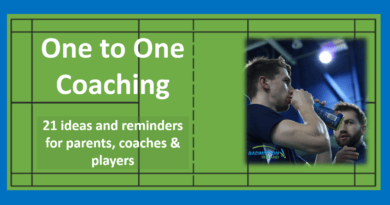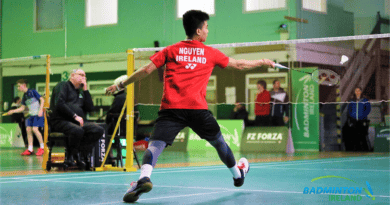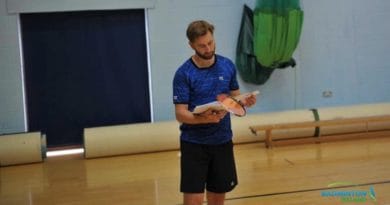6 Ways to coach a better backhand
What are the tips and coaching 'tricks' to produce a better backhand?
I've heard so many different theories on how to coach it I could write a book just about badminton backhands!
Everyone seems to want a better badminton backhand and maybe with good reason
It's an important stroke, especially if you want to play singles
When I was younger I was taught a technique that at the time seemed correct, however, it was fundamentally flawed
The technique worked in practice but fell apart in competition
Then as a coach, I went to Essex and discovered some of these fundamental truths
These backhand suggestions apply to all the variations of backhands, not just one shot
- - - - - - - - - - - - - - - - - -
1 Technique tips that work on court
2 Footwork essentials
3 Hitting actions
4 Young players and what to do
5 Practice Ideas
6 Essential stroke don't ignore it
 Don't forget to watch the great videos from Badminton Insight (links at the bottom)
Don't forget to watch the great videos from Badminton Insight (links at the bottom)
- - - - - - - - - - - - - - - -
1 Technique tips
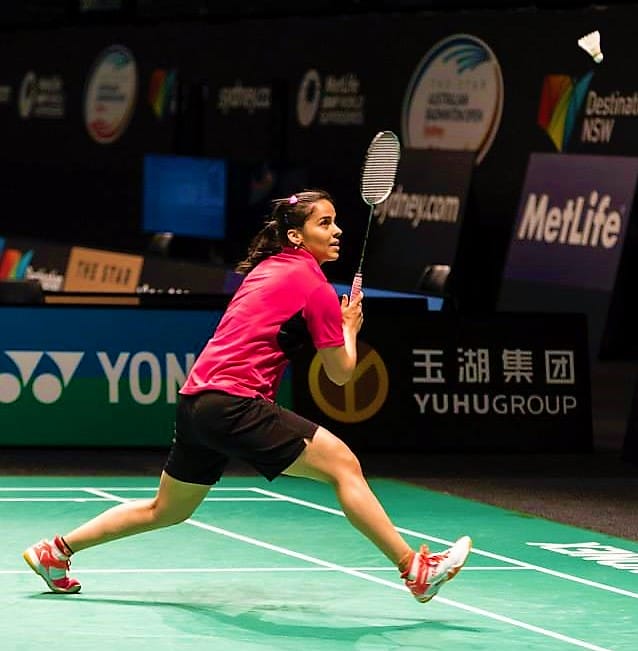 I could write an individual post for you about each one of these tips and will try to in the future.
I could write an individual post for you about each one of these tips and will try to in the future.
But for now I want to share some of the most powerful and effective phrases and tips that I use. These aren't my words but ones that I've seen in action or heard and tried out for myself.
Each has a its own place in the coaching process and some may be emphasised for a while then never spoken about again.
Individually these specific technical elements will assist in the development or act to prevent an inappropriate technique (critical bio-mechanical element) from forming. Some will have a greater impact at different stages of learning, whilst others may only act to reinforce a movement and be briefly required in the coaching process.
- 'Elbow low' in preparation, 'racket head points up'
- 'Hit - Land' and 'Step Up' for clears
- ‘Tough’ deep backhands struck well behind you will often end in a lunge
- "It's backhand time", i.e. look at the back of the hand (@M.Adams)
- Look at the creases in the back of your wrist (@R.Mills)
- Hit at 45ø up and out to the side
- Your grip will change the further the point of impact is behind you, the position of your thumb makes a big difference
- The hitting action will vary depending on the stroke; push, slice, rebound etc, it's not the same for all backhands
- - - - - - - - - - - - - - - -
2 Footwork
Most backhands are played with either foot landing as or just after striking the shuttle. This is a great coaching cue and image for players to use. Striking with this timing will aid power and consistency.
I reccomend that when coaching novice (begginer) players a different empahise is placed on when the foot lands for Clears and Drops (pulls)
It can be demonstrated or questioned with the use of photographs and practice situations that in many occasions the foot will land before impact. However, when coaching the 'clear', not the drop, I have found that instilling a 'land before impact' thought with the player is vastly preferable to a 'land then hit'.
The Clear
For a clear, it is vital that the player is able to play 'as if' to strike and then land. These will be the most testing situations and a robust (strong) technique is required.
You may know players who feel that they can play backhand clears with the foot firmly planted on the court well before impact. In practice with more time and critically less (or none) game-like decisions it may work. However, once in a real game with indecision and recovery to the same shuttle the technique will be tested to the full and exposed. It will also be a stronger technique when faced with an opponent (rather than a feeder) who is pushing you hard and trying to outwit you.
 The Long Drop (Pull)
The Long Drop (Pull)
When playing the 'long flat drop' the foot is often landing before the shuttle is stuck. Even though its a backhand the timing is different to that of the clear. Look out for a future article that talks about the differences between introducing the backhand clear and drop. They are both backhands, but different.
You have 3 choices
I recommend that you try out all 3 to see which you prefer to coach and play. Please use game-like feeding and once some skill is established (contact and direction is consistent) then test all 3 with tougher feeding with game-like decisions (one shuttle, and a rally which finishes with a winner!)
1 Encourage the feeling of landing as or just after striking
2 Encourage the foot to be in place before striking
3 Say nothing and see what happens
Critical Footwork Elements
The movement towards the shot is a left foot followed by a right foot movement, either a running action or chasse, depending on the distance to be covered. Both styles must finish with a turn onto the racket foot before impact.
To emphasise a running style try increasing the distance to that of a real singles game. Feed cross court into the players high backhand and ask the player to play a forehand net prior to you flicking. If it's too far to chasse then run !
'Stepping up' with the racket foot
Especially for clears and smashes. This action suggests that the racket foot is lifted off the court as part of the hitting action. I have found huge improvements for overhead clears when coaching using this 'suggestion' . Please try it out and see if you find an increase in power. For some players using the cue of 'walking up the 1st step of your stairs' can produce an unexpected positive effect.
Lunging
Deep strokes played from behind the player around shoulder height will use a lunge footwork similar to that used in the forecourt. Players must be encouraged to remain confident if the shuttle travels quickly behind them. Ask them to remember how they lunge into the low forecourt and are still able to hold the lunge and be stable. It is important not to try and intercept every shuttle that flys quickly into the backhand court. To hit with power and consistency may require the player to 'allow' the shuttle to travel just past them and 'wait' for that hitting position that they feel confident in.
Intercepting
You need to also practice intercepting shuttles that travel quickly into the backhand court.
Be prepared to use lots of variability in shuttle heights and feeds. The more variability and player indecision (at the start) the better. Encourage cross court fast down shots, straight 'stop' drops and quick rebound clears over the opponent. These 3 strokes can all be played from similar positions but it is the player who should decide. Encourage 'fast Early Preparation' and a positive attitude at whatever the result is.
- - - - - - - - - - - - - - - -
3 Hitting Action
In simple terms and without reference to grip variations ....
.. The Clear is a rebound action (be aware that it may look like a pull action) struck from above the shoulder and often with slight upward step (recommended for junior players)
.. The "long" drop is a pull action with the contact point 45 degrees up and out to the side.
- - - - - - - - - - - - - - - -
4 Young players
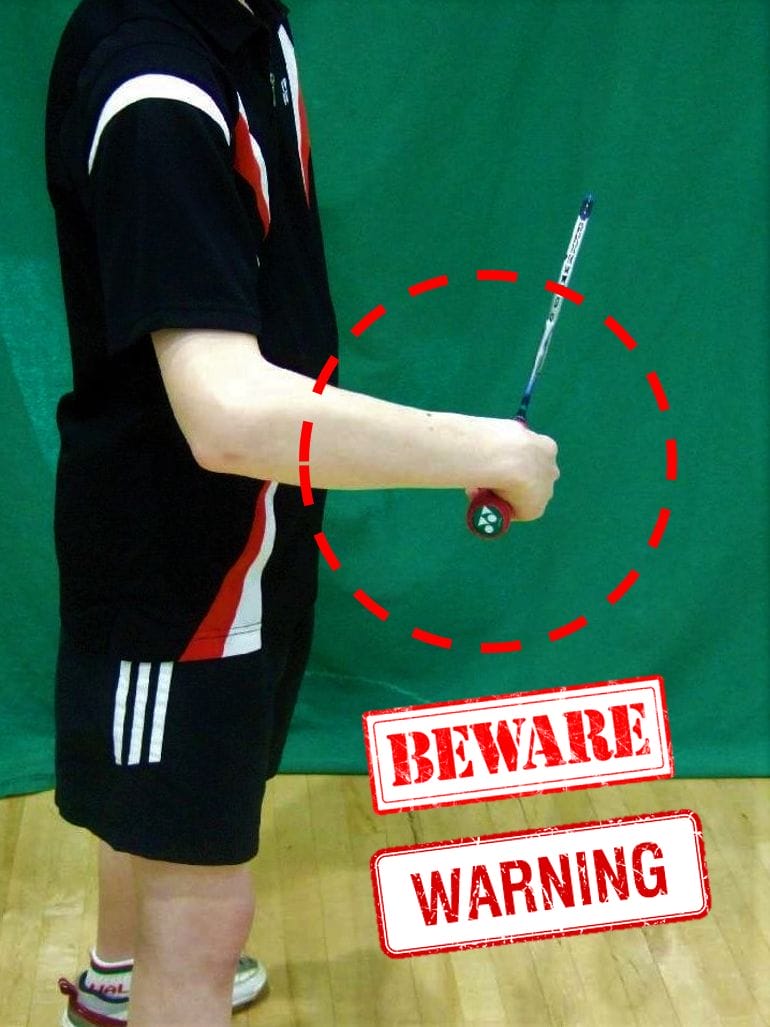 It's important to build confidence and establish a backhand that works (tactically), not just one that goes over the net 8 times out of 10.
It's important to build confidence and establish a backhand that works (tactically), not just one that goes over the net 8 times out of 10.
I recommend that players work on the long drop (see no.5) before the clear. As soon as the the straight long drop is partly established then encourage a cross court effort.
Try changing the grip before the start of the stroke and then just hit the shuttle. It can be exciting to see the result. Make new learning FUN. It doesn't have to be perfect, far from it. In fact slight miss hits often result in great cross court slices with the shuttle dying as it travels over the net.
If you are a coach or parent be aware that there are a few technical limiting factors that if present can make it difficult to develop a backhand :
- ‘floppy wrist’
- 'elbow high"
- "lack of Early Preparation"

These can be addressed if you make use of Wallwork exercises. I promise to write more about the benefits of Wallwork in later posts.
Feeding
Have you considered the impact on how easy or difficult your feeding may be to the long term progression.
There is a balance to be struck in deciding how much decision making you include in a practice. These are the elements that require the player to have to adapt and subtly change (without conscious thought) how they play the stroke or where they think about striking it to.
You must experiment to decide between making practices easy to aid development and confidence and knowing when to increase the difficulty and decisions
It took me a few years to realise that during a session is was perfectly acceptable to 'experiment' with levels of complexity and stress.
In fact, it was essential to allow the player to develop through they own trial and error.
I would recommend that you try to always work on the margins of success and error. In time any errors will be seen as part of the skill development.
There is a danger that continual easy feeding will produce 'false confidence' and a skill that will not be robust enough to transfer into a competition
- - - - - - - - - - - - - - - -
5 Practice
Do you agree with the suggestion in point no.4 to introduce the 'long drop' before the overhead clear?
It took me a few years and the opportunity to start with a young 10 year old player to realise the effectiveness of the long 'push' 'flat' drop. I was taught (incorrectly) an overhead clear when I was a junior alongside the backhand drop.
However it was only after starting with a young player that I realised that the flat long drop has so much to offer
There is the technical element but this is quickly surpassed by the opportunities for tactical and mental development in just one stroke. Then there was the surprise at the rate of development by using skill transfer from other areas of the court.
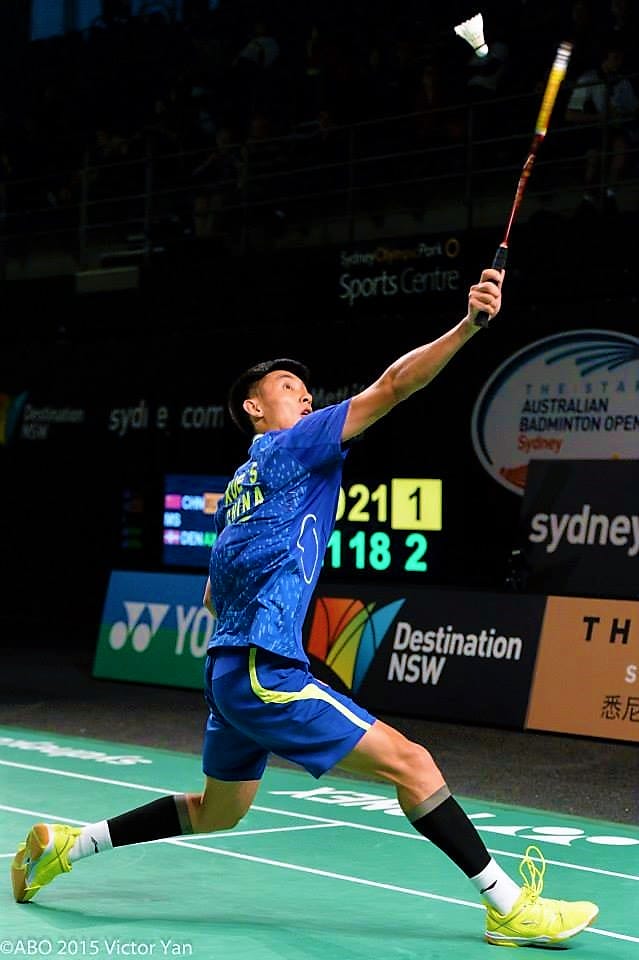
It makes me smile 🙂
Even to this day with my most recent pupil I continue to smile at the easy they develop once the initial learning 'hump' is partly conquered.
As I have said in other posts, I am not a sports scientist so find it hard to find the words to describe this effect perfectly. All I know is that f I work patiently through early essential practices and then increase the variability and demands, then the rate of development can explode.
What looks like slow, often stodgy, progress turn into 'fist pump' and 'Wow !" moments with what seems very little coaching input
Look out for future posts on this backhand long drop or backhand drag as they call it in Ireland. It will hopefully give you some interesting insights into this stroke.
If you would rather coach an overhead backhand at the same time or before the long drop I would really like to know your thoughts on the progressions.
Especially how it transfers into a competition match.
- - - - - - - - - - - - - - - -
6 Essential Stroke
I presume that you agree that a good ‘round the head’ technique does not compensate for a poor backhand!
I wish I had realised that 40 years ago. It would have placed less stress on my knees, back and my achilles. We practice many hours on our round the head but very few on our backhand overhead and even less on our backhand long drop (especially the flat crosscourt).
As your level of play increases so the flaws in your game, however minor, become more apparent.
You will not be able to hide your backhand
Opponents will play shuttles into your backhand area and they must be dealt with. If you take the 5 suggestions above and try to apply a little of each one on court then I'm confident you will start to develop a backhand. If you are a coach you really have no choice.
If you need help I am willing to share all the knowledge and tips I've picked up from some great coaches and players.
- - - - - - - - - - - - - - - -

- - - - - - - - - - - - - - - - - -
Is there anything that you've read that has helped or you disagree with then please send me an email.
I'd love to hear your views contact@badmintonandy.com
6 Ways to cope with a weak Backhand
